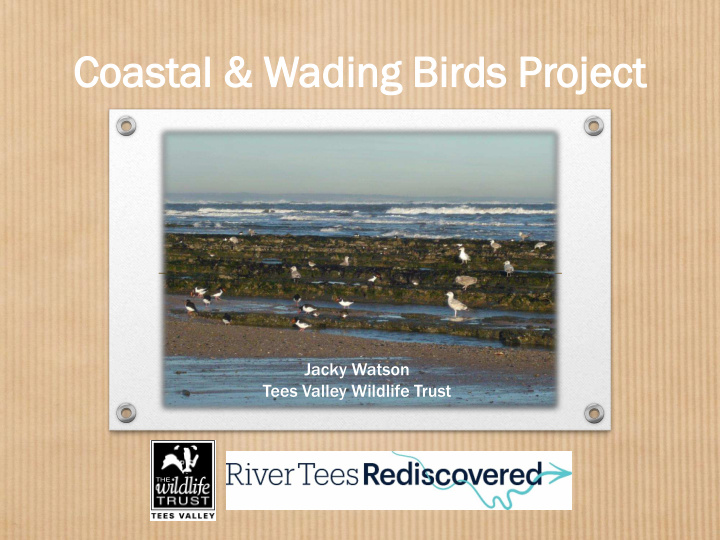



Coast astal al & Wad ading ing Bir irds ds Pr Project ject Jacky Watson Tees Valley Wildlife Trust
Im Impro prove e cha hances nces for our r nesting ting and d over erwint wintering ering bi birds ds
Did you know…? That the Teesmouth and Cleveland Coast is: • a Special Protection Area under the European Birds Directive as it supports internationally important populations of regularly occurring migrating species and an internationally important assemblage of water birds • also a European Marine Site as covered (part of the time) by tidal waters • a Ramsar site as an internationally important wetland • internationally important for Breeding Little Tern, passage Sandwich Tern, wintering Knot and Redshank • Special importance also attached to Ringed Plover, Sanderling, Cormorant, Oystercatcher and Turnstone
What’s the problem? More than 90% of intertidal habitats have been lost to land reclamation between 1860 and 1980 Remaining areas are subject to increasing levels of human disturbance
What happens when birds are disturbed?
So how do we improve chances for coastal birds?
Increase appreciation of our coast and birds
Improve habitat
Reduce bird disturbance
Bi Bird Di d Distu sturban ance ce Sur urveys ys
What happens during a Bird Disturbance Survey?
Could you be a bird disturbance surveyor??
Survey Birds Cormorant
Survey Birds Curlew
Survey Birds Dunlin
Survey Birds Knot
Survey Birds Oystercatcher
Survey Birds Purple Sandpiper
Survey Birds Redshank
Survey Birds Ringed Plover
Sanderling
Turnstone
Counting birds: Oystercatcher
Counting birds: Black Tailed Godwit
Counting birds: Little Terns
Counting birds: Ringed Plover
How can you help? Join in a sociable Bird Disturbance Survey or go it alone • Join in a beach clean • Help us at events and stalls • Help with school groups • Send me some photographs • Reduce plastic and add your voice to campaigns for less • plastic packaging Wiggle round your waders! Thank you!
Recommend
More recommend